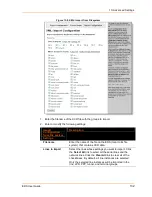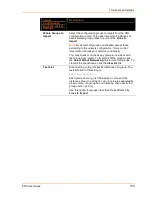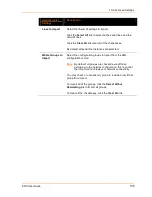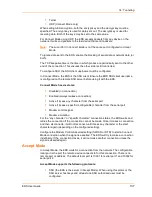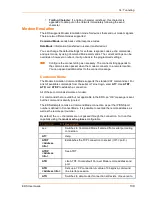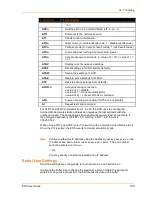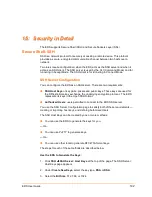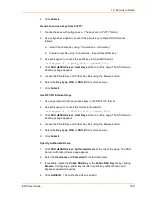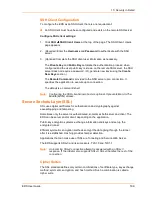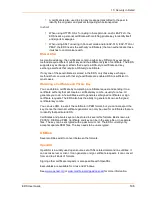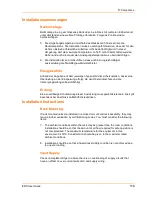
15: Security in Detail
EDS User Guide
144
SSH Client Configuration
To configure the EDS as an SSH client, there is one requirement:
An SSH client must have been configured and exists on the remote SSH server.
Configure SSH client settings:
1. Click SSH
SSH Client: Users at the top of the page. The SSH Client: Users
page appears.
2. (Required) Enter the Username and Password to authenticate with the SSH
server.
3. (Optional) Complete the SSH client user information as necessary.
The Private Key and Public Key automate the authentication process; when
configured and the user public key is known on the remote SSH server, the SSH
server does not require a password. (Or, generate new keys using the Create
New Keys section.)
The Remote Command is provided to the SSH server upon connection. It
specifies the application to execute upon connection.
The default is a command shell.
Note
: Configuring the SSH client known hosts is optional. It prevents Man-In-The-
Middle (MITM) attacks.
Secure Sockets Layer (SSL)
SSL uses digital certificates for authentication and cryptography against
eavesdropping and tampering.
Sometimes only the server is authenticated, sometimes both server and client. The
EDS can be server and/or client, depending on the application.
Public key encryption systems exchange information and keys and set up the
encrypted tunnel.
Efficient symmetric encryption methods encrypt the data going through the tunnel
after it is established. Hashing provides tamper detection.
Applications that can make use of SSL are Tunneling and Secure Web Server.
The EDS supports SSLv3 and its successors, TLS1.0 and TLS1.1.
Note
: An incoming SSLv2 connection attempt is answered with an SSLv3
response. If the initiator also supports SSLv3, SSLv3 handles the rest of the
connection.
Cipher Suites
The SSL standard defines only certain combinations of certificate type, key exchange
method, symmetric encryption, and hash method. Such a combination is called a
cipher suite.



